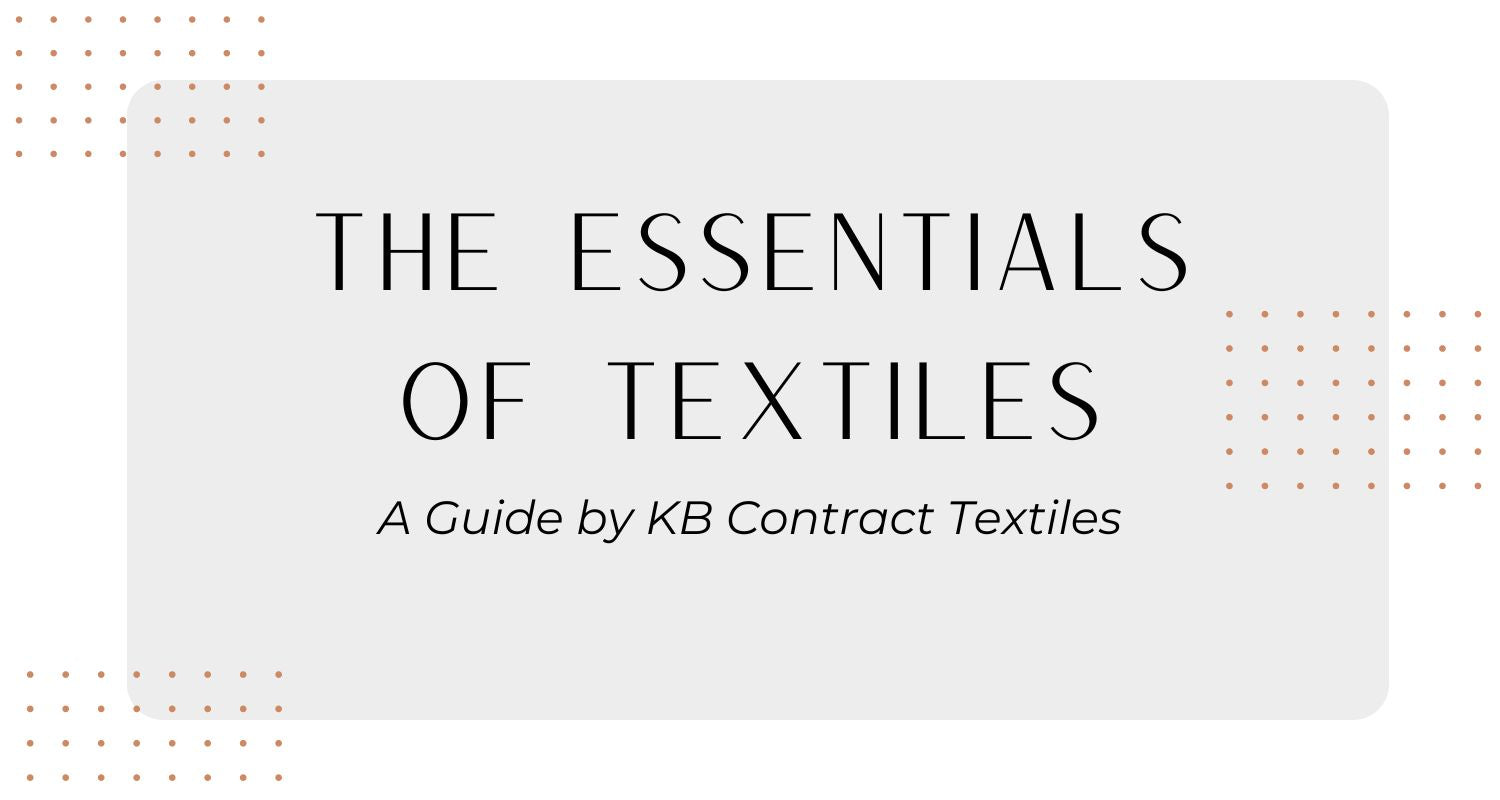Mastering Textile Basics with KB Contract Textiles
In the world of textiles, several key factors define how fabrics are constructed and treated, impacting their usage, durability, and appearance. Understanding these fundamentals is crucial as we explore the various types of textiles, fabric coatings, and essential treatments.
Types of Textiles
Textiles can be broadly categorized into woven, non-woven, knit, laminated, and coated fabrics. Woven fabrics are crafted by interlacing threads on a loom, while non-woven fabrics bond fibers through methods such as chemical or heat treatments; felt is a common example. Knit fabrics, produced by inter-looping threads, are known for their flexibility and resistance to unraveling. Laminated fabrics combine multiple layers, often featuring a polymer film bonded to the fabric. Coated fabrics undergo treatment with polymers or resins to enhance both their aesthetic appeal and functional properties. Popular coatings include Silicone and PVC (Polyvinyl Chloride), which consist of a plastic top layer, foam, and a woven backing. Polyurethane (PU), made from thermoplastic polymers, is another option, recognized for its soft, luxurious feel and vegan qualities, making it a sustainable choice for many applications. Leather, a material derived from animal hides, is created through the process of tanning or similar treatments.
Treatments for Everyday Use
Textiles endure significant wear and tear in daily use. To prolong their lifespan and maintain their appearance, many fabrics receive treatments that enhance resistance to stains, moisture, ink, and denim dye transfer. Here are some common treatments and their benefits:
-
General Stain Resistance: This treatment helps prevent dirt and stains from adhering to the fabric. While it doesn’t provide a full moisture barrier, it effectively resists common spills. An excellent example is the Nanotex finish, which protects fabrics from everyday stains.
-
Ink Resistant Treatment: This treatment blocks ink from penetrating the fabric’s surface, making clean-up simple. Our bleach-cleanable Writer’s Block patterns showcase this technology.
-
Moisture Barrier Treatment: For serious protection, a moisture barrier prevents all liquids from soaking in. Fabrics treated with Crypton or Supreen finishes cause liquids to bead on the surface, preventing all absorption into the material.
-
Moisture Resistant Treatment: Offering some liquid protection, this treatment resists soil and stains while allowing for fabric breathability. A Nanotex finish strikes a balance between repelling moisture and maintaining comfort.
-
Denim Dye Resistance Treatment: This treatment prevents dye transfer from denim, creating a repel and release system to protect coated fabrics. Permablok Plus is a prime example of this finish.
The Purpose of Fabric Backings
Having explored various finishes, let’s dive into the purpose of fabric backings and their impact on performance:
-
Acrylic and Latex Backing: This liquid coating solidifies on the fabric's reverse side, enhancing strength and stability while significantly reducing seam slippage. It’s commonly found in upholstery fabrics and is also known as SBR (Styrene-butadiene rubber) finish.
-
Knit Backing: Bonded with a high-quality knit, this backing enhances durability and provides a luxurious feel, making it ideal for coated fabrics like vinyl.
-
Moisture Barrier Backing: This backing prevents moisture and spills from penetrating the fabric, improving strength and durability while minimizing seam slippage. It is particularly suitable for healthcare settings and food service areas.
-
Antimicrobial Backing: Featuring a durable knit, this backing inhibits bacterial growth, ensuring cleanliness and longevity in coated fabrics.
-
Silicone Treatment: Silicone treatments impart water repellency and waterproof characteristics to fibers, improving softness and resilience—ideal for areas where moisture resistance is essential.
-
Puncture Resistant Backing: Designed to withstand punctures and tears, this backing is permanently bonded to the fabric, making it perfect for high-traffic environments.
Understanding these key textile fundamentals helps you make smart fabric choices for any application. There's much more to the science behind textiles, and we've only scratched the surface. Whether you're working on projects for restaurants, healthcare, senior living, or hospitality, KB Contract Textiles has an extensive collection of fabrics with incredible performance characteristics to suit all your needs.


